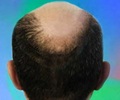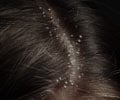Dandruff Causes/Risk factors
Seborrheic dermatitis is caused when microorganisms act on skin glands that produce excessive oil.
Yeast Malassezia furfur (Pityrosporum ovale) is part of the normal resident skin flora and is known to trigger seborrhoeic dermatitis. Often Malassezia furfur is present in seborrhoeic dermatitis and the condition improves with anti-fungal or with medicated shampoo; however soon the skin is re-colonized and dandruff comes back with vengeance. This yeast may have an important role in dandruff.
Genetic and environmental factors can make a person susceptible to Seborrheic dermatitis.
The incidence of this illness in people with AIDS is a whopping 85% in comparison to 3% among the general population. The exact reason for this is unknown but research is probing into the role of CD4-positive T lymphocyte counts ,nutritional factors and P.ovale density in aggravating the condition in these patients.
People with Parkinson’s disease, major paralysis, cranial nerve palsies and other neurologic conditions are also prone to develop seborrheic dermatitis due to the collection of excessive sebum in them due to immobility. This in turn is favorable for the growth of P. ovale, resulting in seborrheic dermatitis.
Some of the other causes of Seborrheic dermatitis are listed below-
- Hormonal and immune factors
- Stress
- Fatigue
- Oily skin
- Infrequent shampooing
- Using certain lotions
- Extreme weather conditions
- Certain skin disorders
- Head injury
- Stroke











